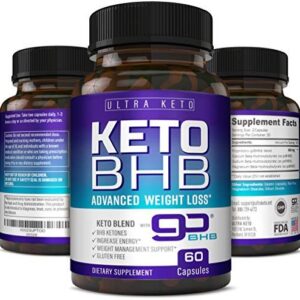How To Rock Your Waist Cincher Like A Pro!
A waist cincher is a powerful tool when it comes to accentuating your curves and enhancing your overall figure. Whether you’re wearing one for fashion, body shaping, or both, incorporating this garment into your wardrobe can provide amazing results.
However, knowing how to style it correctly is key to looking and feeling your best. In this post, we’ll share 10 fashion tips for wearing a waist cincher that will make you look sleek, stylish, and confident.
1. Choose the Right Size for Comfort
When it comes to wearing a waist trainer or corset, size matters. A common mistake is choosing one that’s too tight or too loose. It’s essential to choose a piece that fits snugly around your waist without causing discomfort or restricting movement.
A properly fitted waist cincher should give you that hourglass shape while allowing you to breathe and move comfortably. Avoid going too tight, as this can cause discomfort and be detrimental to your posture.
2. Pair It with Fitted Clothing
One of the best ways to showcase a waist cincher is by pairing it with fitted clothing. Tight dresses, pencil skirts, and tailored tops all work beautifully with this shaping garment.
These items help to emphasize the waist and create that smooth, flattering silhouette. When styling your waist trainer, consider wearing pieces that hug your body in the right places to highlight the cinched waist.
3. Layer It with Outerwear for a Chic Look
A waist cincher can also be worn under a jacket, blazer, or long coat for a chic, layered look. A tailored blazer paired with a corset accentuates your waistline and gives your outfit a sophisticated edge.
The key is to find outerwear that is slightly looser in fit to ensure your waist trainer isn’t too bulky under the layers.
4. Wear It with High-Waisted Bottoms
For a trendy and flattering look, pair your waist cincher with high-waisted jeans, trousers, or skirts. High-waisted bottoms naturally create a longer and leaner appearance by elongating the legs and emphasizing the waist.
When you combine this with a waist trainer, it enhances the effect, giving you a beautiful, hourglass shape. This combination works particularly well for those who want to define their waist without feeling overly constricted.
5. Experiment with Different Fabrics
Waist cinchers come in a variety of fabrics, so experiment to find one that suits your style. Some are made from materials like cotton, latex, or even neoprene.
Cotton waist trainers are breathable and perfect for everyday wear, while latex ones offer a firmer hold, ideal for shaping and slimming. If you’re looking for something more fashion-forward, try a waist trainer with lace or satin for a luxe look.
6. Mind Your Proportions
When wearing a waist cincher, it’s important to pay attention to the proportions of your outfit. For instance, if you’re wearing a tight waist trainer, balance it out with looser pieces on top or bottom.
This will create a more balanced silhouette and prevent you from looking top- or bottom-heavy. For example, a structured body shaper paired with a flowy blouse or a voluminous skirt gives you a balanced and flattering look.
7. Incorporate It Into Your Lingerie
A waist cincher is often associated with lingerie and can be worn as part of your intimate apparel. A corset-style waist trainer, worn with matching lingerie sets, can give you a seductive and alluring look.
It’s also a fantastic option if you’re looking to enhance your shape for special occasions. Opt for waist trainers that come with lace detailing or satin finishes to add a touch of glamour to your outfit.
8. Layer Over Dresses for a Fashion-Forward Look
You can also wear a waist trainer over your dresses for a fashion-forward twist. Cinching your waist with a statement body shaper over a simple dress creates an instantly eye-catching look.
Whether you’re wearing a flowy maxi dress or a simple A-line dress, layering a waist cincher on top helps define your waist and adds a stylish edge to your outfit. Experiment with different colors and materials to create unique, personalized looks.
9. Focus on Your Posture
Wearing a waist cincher isn’t just about creating a flattering shape; it can also improve your posture. This shaping garment helps support your back and encourages you to stand tall with your shoulders back.
Good posture not only complements your cincher but also enhances your overall appearance. Keep this in mind as you wear your waist trainer, and you’ll find that your confidence increases too.
10. Accessorize with Bold Belts or Jewelry
If you want to make your waist trainer the star of your outfit, accessorize it with statement belts or bold jewelry. A wide, bold belt worn over your waist cincher can add an extra touch of style while further accentuating your waistline.
Alternatively, you can draw attention to your neckline with chunky necklaces or earrings. By adding these accessories, you draw the eye to your waist without overshadowing the beauty of the cincher itself.
Conclusion:
A waist cincher is more than just a shapewear piece—it’s a versatile fashion accessory that can be incorporated into numerous outfits.
While waist trainers are essential for your wardrobe, do not rule out daily exercises for optimal fitness. Click here for exercise ideas for women.
Whether you’re using it to shape your figure or simply to add a stylish touch to your look, these 10 fashion tips will help you wear your waist trainer with confidence. And, be sure to find out more about waist cinchers here.
Keep in mind the importance of fit, fabric, and proportions, and you’ll be able to elevate your outfit with ease. Remember to embrace your unique body shape, and don’t be afraid to experiment with different styles to find the perfect look for you.
By following these tips, you’ll be able to incorporate the waist cincher into your wardrobe in a way that enhances your style and highlights your curves.
Try pairing your waist trainer with different pieces, experimenting with fabrics and accessories, and most importantly, wear it with confidence!





Your words don’t just speak to the mind; they reach deep into the soul, evoking a response that lingers long after reading.